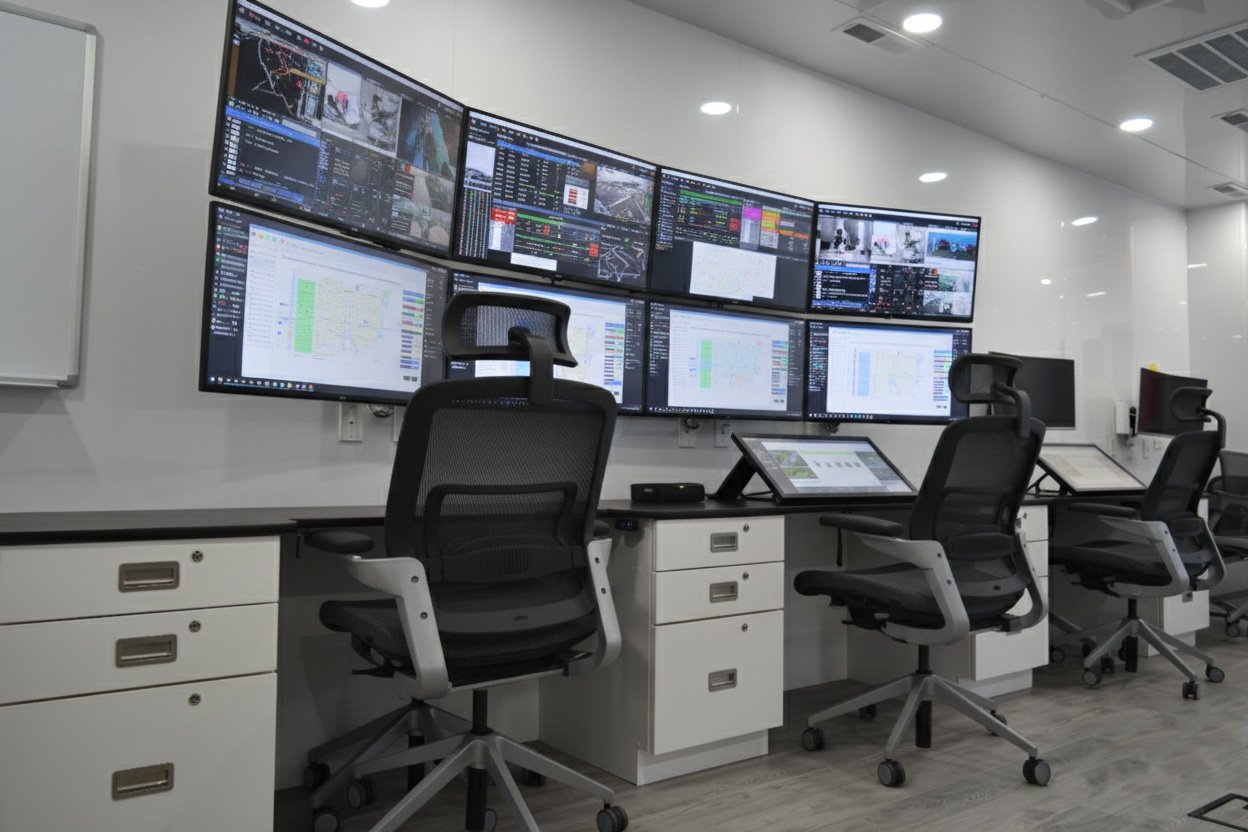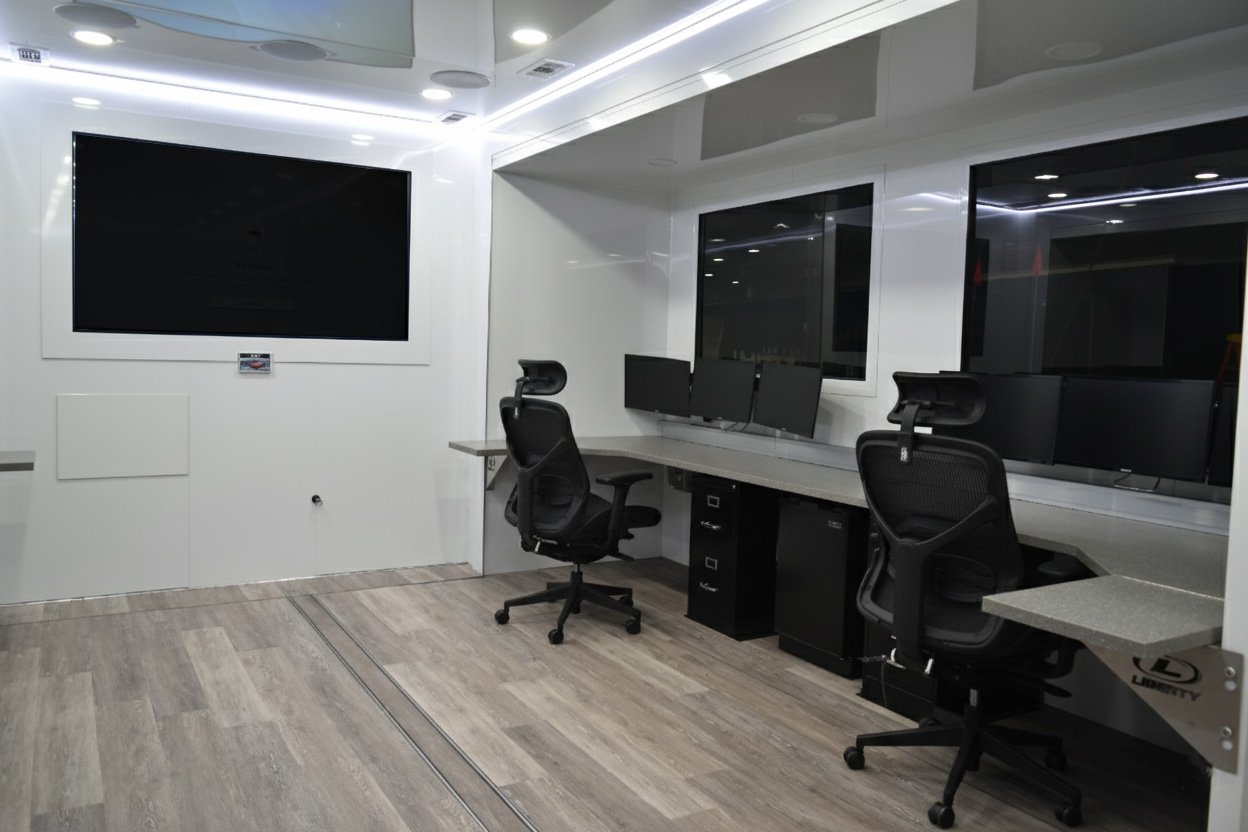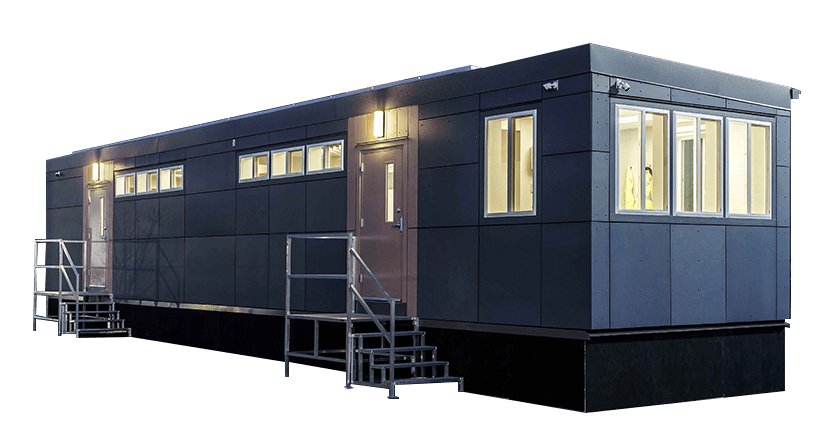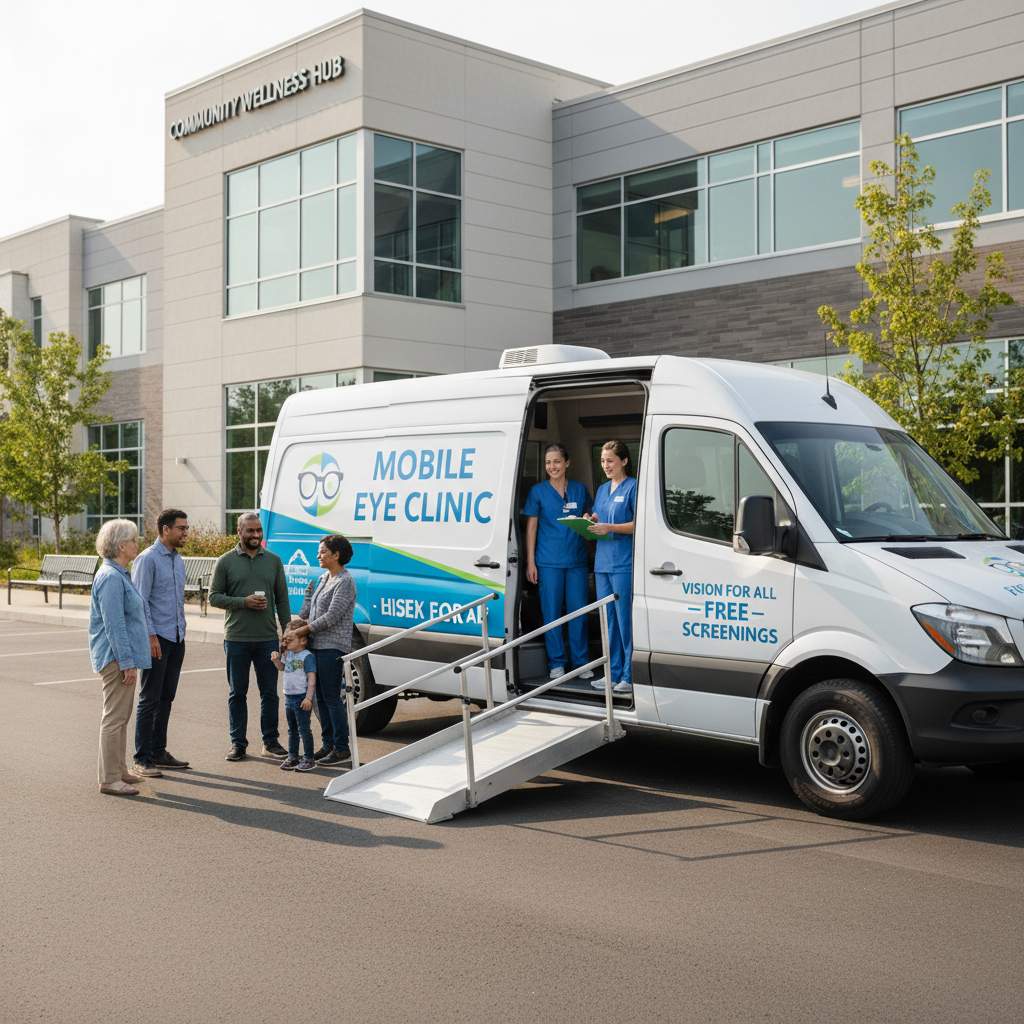Maximize Your Mobile Workspace: Exploring Craftsmen's Mobile Office Trailer Features and Options
When designing a custom mobile office trailer, choosing the right features can make all the difference in ensuring a functional, comfortable, and...
7 min read
Craftsmen Industries Oct 30, 2025 7:48:30 AM

In fast-paced field operations, mobile command vehicles (MCVs) serve as the nerve centers for critical missions. Whether they’re used by emergency services, corporate field teams, or defense units, these vehicles are designed for decision-making on the move. However, comfort and usability are often overlooked in favor of technology and equipment.
That's where ergonomic design becomes essential. When command spaces are designed with human comfort and efficiency in mind, productivity improves and stress decreases. For instance, research indicates that improving workplace conditions can lead to a 3% to 18% increase in productivity, depending on the specific environmental enhancements made.
This guide dives into ergonomic design strategies for MCVs, helping organizations build spaces that enhance focus, safety, and team collaboration, even in the most demanding environments.
This blog dives into ergonomic design strategies for MCVs, helping organizations build spaces that enhance focus, safety, and team collaboration, even in the most demanding environments.
Ergonomics isn’t just about comfort, but it’s about creating environments that support the body and mind during long missions. Inside a mobile command vehicle, where personnel may sit for hours while coordinating complex operations, ergonomics becomes mission-critical.
Good design minimizes strain, improves cognitive function, and ensures safety compliance. Teams that operate in well-designed spaces tend to make decisions faster, experience fewer injuries, and maintain higher morale. According to the National Institute for Occupational Safety and Health (NIOSH), ergonomically optimized workspaces directly reduce the risk of musculoskeletal disorders, a major concern for field operators who spend extended hours in compact environments.
By combining comfort, accessibility, and smart layout design, organizations can transform their command vehicles from cramped spaces into efficient, health-conscious hubs of activity.
Repetitive movements, awkward postures, and limited mobility often cause discomfort in field teams. Ergonomic seating, adjustable desks, and proper screen height alignment help reduce neck, back, and wrist strain, allowing operators to stay sharp longer.
Lighting, air quality, and sound all influence focus. Bright, glare-free lighting and adjustable ventilation systems keep operators alert and responsive during critical moments.
The Occupational Safety and Health Administration (OSHA) recommends incorporating ergonomic safety measures to minimize the risk of fatigue and injury, ensuring compliance while promoting operator well-being.
A mobile command vehicle’s layout determines how efficiently a team operates. Limited space means every inch must serve a purpose, from storage placement to the flow of movement.
A functional layout allows teams to transition quickly between communication stations, data centers, and decision tables without disrupting workflow. The U.S. Department of Transportation (DOT) highlights that thoughtful space planning enhances both safety and response times, particularly in mobile and emergency environments.
When designing layouts, consider the golden triangle of ergonomics: easy access, clear visibility, and minimal movement.
Let's take a closer look at this specific layout to enhance efficiency.
Positioning core equipment and displays in a centralized hub keeps communication lines open and minimizes unnecessary steps.
Height-adjustable desks allow operators to switch between sitting and standing, improving circulation and focus during extended missions.
Wide aisles, non-slip floors, and rounded corners make navigation safer, especially when the vehicle is in motion.
Comfortable seating is one of the most vital yet overlooked elements of ergonomic design. Since command operators spend the majority of their time seated, improper posture can quickly lead to fatigue, discomfort, or even chronic injury.

A well-designed chair promotes neutral posture, supports the spine, and allows movement. The University of Michigan Human Factors Engineering Lab notes that adjustable seating significantly boosts cognitive performance by reducing pain and tension.
Ergonomic chairs should feature adjustable lumbar support, armrests, and recline angles. This flexibility ensures comfort for different users and body types.
Vehicles often encounter rough terrain, so seats should absorb vibration to reduce fatigue. These vibration-resistant materials are designed to absorb and disolve vibrational energy to lessen the stress and fatigue.
Seats should face key monitors directly, with adjustable swivel mounts for better reach and visibility during operations. It keeps the worker fresh and active during work and eventually increases productivity.
Adjust the height of the chair so that your feet rest flat on the floor. Or use a footrest so your thighs are parallel to the floor. If the chair has armrests, position them so your arms sit gently on the armrests with your elbows close to your body and your shoulders relaxed.
Lighting is one of the most important factors influencing comfort, concentration, and mood in a mobile command vehicle (MCV). Poor lighting can cause headaches, blurred vision, and fatigue, directly impacting how well operators perform. An effective lighting plan ensures the right brightness levels and color balance for every task, from reading data screens to handling physical documents. Let's discuss different aspects of life during work.
Layered lighting, combining ambient, task, and accent lighting, offers complete control over visibility and comfort. Dimmable LED panels allow crews to adjust brightness during day and night operations without straining their eyes.
Indirect fixtures, anti-glare screens, and matte finishes help reduce reflections. This creates a clear view of displays and instruments, essential for maintaining accuracy during high-pressure missions.
Circadian lighting supports the body’s natural rhythms, keeping teams alert during long shifts. According to the National Renewable Energy Laboratory (NREL), environments with adaptable lighting enhance productivity and reduce operator fatigue. In short, great lighting doesn’t just make the space brighter, but it makes your crew sharper, calmer, and ready for anything.
Yes, red lights are often used during night operations because they preserve night vision without affecting alertness.
Technology integration is the heartbeat of every mobile command vehicle. From communication systems to surveillance tools, technology must be seamlessly accessible without overwhelming operators. Poorly placed controls or cluttered layouts cause unnecessary strain and slow response times.
A unified command dashboard combines navigation, communication, and monitoring tools into one ergonomic interface. Touchscreen and voice-assisted systems reduce repetitive movements, keeping workflows intuitive and efficient.
Hidden wiring and well-planned cable routes maintain a clutter-free space. Components should be positioned within arm’s reach, avoiding awkward stretches or rotations that lead to fatigue.
Different team members may operate the same workstation. Adjustable monitor arms and modular consoles ensure everyone can work comfortably, regardless of height or body type. When everything is within comfortable reach, teams can focus more on mission objectives and less on interface navigation, ensuring every touch and click contributes to operational success.
They reduce the number of manual actions required, helping operators maintain a neutral posture.
Efficient organization is essential for maintaining readiness in compact environments. Mobile command units carry a range of tools, computers, and documentation, without a clear storage plan, operations can quickly become chaotic. Let's explore the storage modules for a better work environment and performance.
Custom shelving and drawers tailored to the mission type maximize space. Modular systems allow flexibility; you can reconfigure the setup for medical, security, or communication operations as needed.
Using vertical storage and under-seat compartments makes every inch count. Foldable racks and ceiling-mounted bins add storage capacity without restricting movement inside the cabin.
Heavy items should be stored between knee and shoulder height to prevent strain. Proper labeling, soft-close drawers, and secure latches protect both personnel and equipment during transit.
Comfortable environments improve morale and reduce fatigue. Inside an MCV, where operators spend long hours, air quality, temperature, and noise levels directly affect cognitive performance.
Zoned climate systems let each operator control airflow and temperature. This reduces thermal discomfort and prevents drowsiness during extended missions.
Noise control is essential for concentration. Using soft wall panels, carpeted floors, and insulated partitions minimizes sound reverberation and outside interference, enabling clear communication.
Air quality also plays a big role. HEPA filtration systems and humidity control prevent discomfort and keep teams alert and healthy. According to the National Institute for Occupational Safety and Health (NIOSH), clean air environments contribute to better cognitive performance and reduced fatigue. In short, optimizing sound, air, and temperature isn’t just about comfort, but it’s about sustaining high performance during long missions.
Designing ergonomically optimized command vehicles is no small feat. Space constraints, power limitations, and diverse user needs all pose challenges. However, modern innovation is changing how designers approach comfort and efficiency.
Every inch of space matters. Foldable desks, retractable screens, and movable chairs let teams adjust configurations based on the mission type without compromising mobility.
New materials such as aluminum composites and carbon fiber panels reduce weight while maintaining durability. This makes MCVs more fuel-efficient and easier to reconfigure.
Designers now use biometric data to assess posture, fatigue, and temperature preferences. The Human Factors and Ergonomics Society (HFES) notes that such analytics-driven design improves overall comfort and productivity in small environments.
As technology advances, the next generation of MCVs will emphasize adaptability and smart comfort. Designers are blending artificial intelligence, sustainable materials, and virtual simulations to create the ideal workspace for every operator.
AI-integrated systems will automatically adjust lighting, seating, and temperature based on user behavior and preferences. This ensures optimal comfort and focus, even during long operations.
VR allows designers to test and refine interior layouts before production. This reduces costly errors and ensures that final designs are both practical and comfortable.
An ergonomic mobile command vehicle isn’t just a workspace on wheels, but it’s a strategic advantage. Every curve, every seat, and every lighting choice has the power to shape performance. When operators are physically supported and mentally focused, decisions are sharper, collaboration flows more easily, and missions succeed faster.
Investing in ergonomic design is more than a design choice. It’s a commitment to your team’s well-being and efficiency. By combining human-centered layouts, smart technology, and adaptive comfort systems, your mobile command unit becomes a space where productivity and innovation thrive together.
Whether you’re upgrading an existing fleet or designing a new command vehicle from scratch, Craftsmen Industries is the most reliable partner to work with. Build an environment that works as hard as your people do. If you need any assistance, call us today.
In the automotive sector, ergonomics refers to the optimal adaptation of a vehicle to the people inside it. This minimises the strain placed on both driver and passengers. To do this, all possible body sizes, sitting, and driving habits need to be taken into consideration.
Focus on ergonomic design: Ensure that seats, controls, and displays are intuitively placed for both safety and visual harmony.
Ergonomics in interior design aids in making designs more functional and user-friendly. It optimises well-being and performance by focusing on room layout, ease of movement, lighting, cabinet height, and furniture size to ensure these spaces support natural movements and postures.
The principles of ergonomic design, designing products and environments that are easy to use, comfortable, and safe, can be achieved by considering factors such as the physical and mental capabilities of people. The layout and design of workspaces. The type of work being performed.
Neglecting any of these four aspects of ergonomics can significantly impact workplace productivity and job satisfaction. By addressing all components, i.e., functional, postural, brain-based, and environmental ergonomics, you create a healthier, more efficient, and more satisfying work environment.

When designing a custom mobile office trailer, choosing the right features can make all the difference in ensuring a functional, comfortable, and...

Designing a mobile medical vehicle extends beyond simply converting a trailer or RV into a clinic; it involves engineering a space that delivers...

Access to clear vision is not just a health matter, but it’s a quality issue. From reading and driving to studying and working, good vision affects...